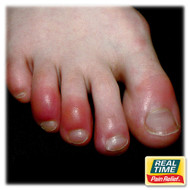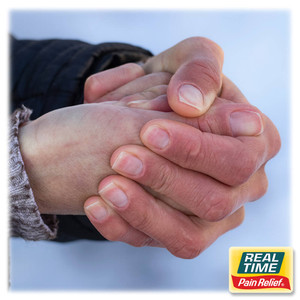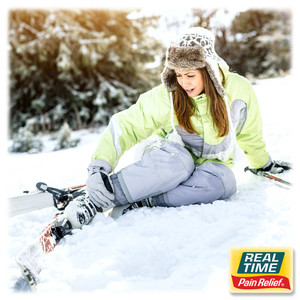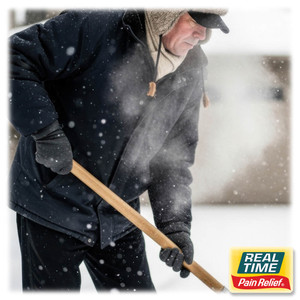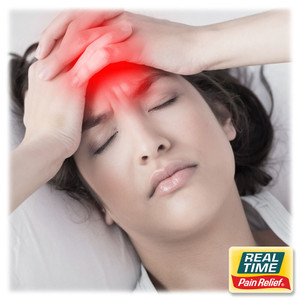Chilblains and Cold-Weather Skin Irritations: Natural Soothing Approaches
Posted by Dennis R Escalera on 1st Oct 2025
Introduction
As autumn ushers in cooler temperatures, many people notice changes not just in their joints and circulation but also in their skin. For some, exposure to cold, damp air leads to chilblains—painful, itchy, red or purple patches that typically affect fingers, toes, ears, or the nose. Though not life-threatening, chilblains can be uncomfortable and may interfere with daily activities, especially if left untreated.
Alongside chilblains, other cold-weather skin irritations—such as dryness, cracking, and irritation from poor circulation—can add to seasonal discomfort. Fortunately, simple preventive measures and the use of topical creams and lotions made with nature’s ingredients can bring soothing relief and protect the skin during colder months.
What Are Chilblains?
Chilblains, also known as pernio, are small, itchy, and inflamed patches that develop on the skin after exposure to cold but non-freezing temperatures. They are caused by an abnormal reaction of the small blood vessels near the skin’s surface.
When the skin is exposed to cold, blood vessels constrict. If the skin is then rapidly warmed, these vessels may not expand properly, causing blood leakage into surrounding tissues. The result is painful, itchy, and sometimes blistered areas.
Common Symptoms of Chilblains
- Red, purple, or dark patches on the skin
- Itching, burning, or tingling sensations
- Swelling or tenderness in affected areas
- In severe cases, blisters or ulcers
Chilblains usually resolve within one to three weeks, but recurrent exposure to cold without protection may cause repeated flare-ups.
Who Gets Chilblains?
Chilblains are more common in:
- Women: Especially younger women, due to hormonal influences on circulation.
- People with poor circulation: Conditions such as Raynaud’s phenomenon or diabetes increase risk.
- Individuals living in damp, cool climates: Cold combined with humidity triggers more cases.
- Underweight individuals: Less body fat provides less natural insulation.
- Smokers: Nicotine constricts blood vessels, worsening circulation.
Other Cold-Weather Skin Irritations
Chilblains often occur alongside other seasonal skin issues, including:
- Dryness and cracking: Cold air and indoor heating strip skin of moisture.
- Irritation from circulation problems: Poor blood flow increases vulnerability to damage.
- Frostnip and frostbite (in extreme cold): Though more severe, they share similar triggers with chilblains.
How to Prevent Chilblains and Skin Irritations
1. Keep Extremities Warm
- Wear insulated gloves, socks, and hats to prevent temperature fluctuations.
- Use hand warmers when spending extended time outdoors.
- Avoid walking barefoot on cold surfaces.
2. Avoid Rapid Temperature Changes
- Warm cold hands and feet gradually, rather than placing them directly near heaters or hot water.
- Keep indoor temperatures steady.
3. Maintain Healthy Circulation
- Regular exercise encourages blood flow to extremities.
- Avoid tight shoes or socks that restrict circulation.
- Don’t smoke, as it worsens vascular constriction.
4. Protect and Hydrate Skin
- Apply thick, emollient-rich lotions to prevent dryness and cracking.
- Use gloves when washing dishes or handling cold objects.
- Stay hydrated, even when you don’t feel as thirsty in cooler weather.
Topical Relief with Nature’s Ingredients
Topical creams and lotions can bring both soothing comfort and protective benefits for chilblains and cold-weather irritations. Many nature-based ingredients are especially effective in reducing inflammation, easing itching, and repairing the skin barrier.
Here are some of the most beneficial:
1. Aloe Vera
- Provides cooling relief for burning and itching.
- Speeds up healing of irritated or blistered skin.
- Helps hydrate and protect fragile skin.
2. Arnica Montana
- Reduces swelling and inflammation.
- Eases tenderness around chilblains.
- Supports tissue recovery in affected areas.
3. Calendula (Marigold Extract)
- Known for its skin-healing and anti-inflammatory properties.
- Calms redness and irritation.
- Helps prevent infection in cracked or broken skin.
4. Chamomile Extract
- Naturally anti-inflammatory and soothing.
- Reduces itching and burning sensations.
- Gentle enough for sensitive skin.
5. Menthol (from peppermint oil)
- Provides a mild cooling sensation that eases itching.
- Helps stimulate blood flow when applied topically.
- Offers temporary pain relief.
6. Eucalyptus Oil
- Enhances circulation, encouraging faster recovery.
- Provides antimicrobial protection for irritated skin.
7. Shea Butter and Cocoa Butter
- Deeply moisturize dry skin.
- Create a protective barrier against environmental damage.
- Reduce cracking and flaking caused by cold air.
When combined, these ingredients can provide a multi-layered defense: soothing discomfort, reducing inflammation, restoring hydration, and protecting against further cold-weather damage.
Home Remedies and Lifestyle Tips
1. Gentle Massage
Massaging hands and feet with warming creams improves circulation and reduces flare-ups.
2. Warm Soaks (Not Hot)
Soaking affected areas in lukewarm water for 10–15 minutes can encourage blood flow without damaging tissues.
3. Moisturize Frequently
Apply lotion after bathing and before bed to lock in moisture.
4. Avoid Scratching
Chilblains can be intensely itchy, but scratching can damage skin and increase infection risk. Topical creams with anti-itch botanicals help minimize the urge.
5. Balanced Diet
- Vitamin C: Supports collagen production for skin repair.
- Vitamin E: Protects skin cells from damage.
- Omega-3 fatty acids: Promote circulation and skin health.
When to Seek Medical Care
Most cases of chilblains resolve with self-care, but medical attention may be needed if:
- Sores or ulcers develop.
- Skin becomes infected (red, swollen, or pus-filled).
- Symptoms do not improve after two to three weeks.
- You have diabetes or another condition affecting circulation.
Doctors may prescribe topical corticosteroids or vasodilating medications in severe cases. However, preventive measures and natural topical relief remain essential for long-term comfort.
The Role of Topical Nature’s Ingredients in Long-Term Care
Unlike oral medications, which act systemically, topical creams target the localized discomfort of chilblains and skin irritation. They can:
- Relieve itching and burning.
- Encourage circulation in affected areas.
- Protect delicate skin from cracking.
- Provide moisture and barrier protection against dry, cold air.
This makes topical treatments a safe, non-invasive, and effective addition to daily cold-weather self-care.
Conclusion
Chilblains and other cold-weather skin irritations may not be life-threatening, but they can be painful, frustrating, and disruptive. By taking preventive steps—such as staying warm, avoiding sudden temperature changes, and protecting skin from dryness—many flare-ups can be minimized.
When discomfort does arise, topical creams and lotions with nature’s ingredients provide a safe and soothing solution. From aloe vera to calendula, arnica to shea butter, these botanicals offer hydration, anti-inflammatory relief, and protection. Combined with mindful lifestyle choices, they make it possible to face autumn and winter with healthier, more comfortable skin.
References
- Mayo Clinic. “Chilblains (Pernio).”https://www.mayoclinic.org/diseases-conditions/chilblains/symptoms-causes/syc-20351097
- Cleveland Clinic. “Chilblains (Pernio).” https://my.clevelandclinic.org/health/diseases/21817-chilblains-pernio
- National Health Service (NHS). “Chilblains.” https://www.nhs.uk/conditions/chilblains
- DermNet NZ. “Chilblains (Pernio).” https://dermnetnz.org/topics/chilblains
- American Academy of Dermatology. “Winter skin care: How to prevent dry, itchy skin.” https://www.aad.org/public/everyday-care/skin-care-basics/care/winter-skin-survival-kit

